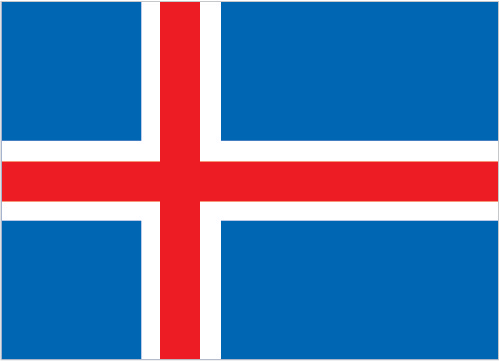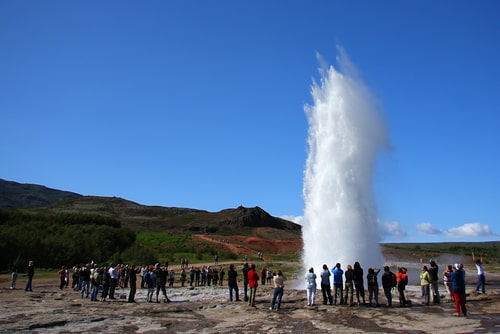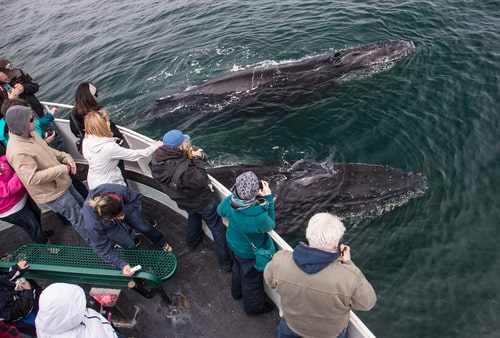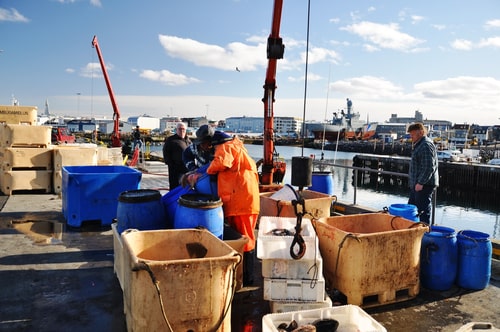Last updated on May 15th, 2022
Iceland is a Nordic island country in the North Atlantic. It has an area of 103,000 square km. Its capital and largest city is Reykjavík. Icelandic is the official and national language of Iceland. Its official currency is Icelandic króna (ISK). Iceland, country of geothermal pools and northern lights, volcanoes, and glaciers, is a prosperous nation. Here are 77 interesting facts about Iceland to help stimulate your curiosity and desire to travel to the Land of Fire and Ice.
Historical facts
1. The settlement of Iceland began in the year 874 AD when a Viking chieftain from Norway, Ingólfr Arnarson, became the island’s first permanent settler. More Norwegians some Scandinavians as well followed through the centuries.
2. Except for a brief interruption from 1799-1844, Iceland’s independent commonwealth has been governed by the Althingi parliament since 930, the world’s oldest extant parliamentary institution. Iceland is the oldest democracy in the world.
3. Greenland was colonized by people from Iceland in 986.
4. Iceland acceded to Norwegian rule after a period of civil strife in the 13th century. In later centuries it was under Denmark’s rule.
5. During the final quarter of the 18th century approximately 20 to 25 percent of the population of Iceland emigrated to the United States and Canada because of famine in the country.
Flag of Iceland

6. Iceland became independent in 1918 and founded the Republic of Iceland in 1944. Relying on subsistence agriculture and fishing, the country was among one of the poorest in Europe.
7. Following World War II, Marshall Plan assistance and industrialization of the fisheries brought prosperity to Iceland. It became one of the most developed and wealthiest nations in the world and remains so today.
8. Joining the European Economic Area in 1994 further diversified the nation’s economy into manufacturing, finance and biotechnology and continued its prosperity.
9. Just south of the Arctic Circle, Iceland is considered to be part of Europe for political, historical, cultural and practical reasons. The population of the country reached 300,000 in 2006.
10. The world’s first democratically directly elected female president was an Icelander. Vigdis Finbogadóttir was elected in 1980. Jóhanna Sigurŏardóttir became Iceland’s first female Prime Minister in 2009, and also the first openly lesbian head of government in the world.
Geography
11. Iceland was the last land in Europe to be settled and populated. It is the youngest country in the world in terms of land form.
12. Iceland is the 18th largest island in the world and Europe’s second largest island after Great Britain.

13. Reykjavik, the capital of Iceland, is the northernmost national capital in the world. Approximately 60 percent of the country’s population lives in Reykjavik.
14. East Iceland has the country’s largest forest, lush farmlands, and many natural harbors with fishing villages.
15. The South coast is home to some of the nation’s most visited tourist attractions, including the Golden Circle. Dettifoss Waterfall is the most powerful waterfall in Europe.
Iceland on the map
16. West Iceland is one of the island’s most geologically diverse regions with one of the greatest concentration of geysers in the world as well as the famous Snæfellsjökull glacier.
17. The Westfjords in the uninhabited northwest corner of the country are preserved as a relatively unspoiled wilderness area with a variety of geological features of their own.
18. North Iceland has dramatic lava fields and hills carved out by rivers with turbulent waterfalls. The small fishing town of Húsavík is the whale watching capital of Europe.
19. The Reykjanes lava fields are a geothermal wonder and a beautiful place where lighthouses outnumber villages. About 30 percent of Iceland is lava fields. The famous Blue Lagoon are found here.
20. Vatnajökull glacier is the largest ice cap in Europe. It is actually larger than all the other glaciers in Europe combined.
Geological facts
21. The volcanic zone in central Iceland is a “constructive junction” between the western part of Iceland belonging to the North American tectonic plate and the eastern part on the Eurasian plate.
22. Located on this Mid-Atlantic Ridge running through its center, Iceland is divided in half by volcanoes and has the most active volcano area in the world with a volcano erupting, on average, every five years.
23. The island’s location makes it geologically very young and active. Laki’s eruption in 1783-84 caused a famine that killed almost one fourth of the island’s population. Iceland is responsible for more than a third of all the fresh lava on earth in the last six hundred years.

24. Iceland has many geysers. The English word geyser is derived from Iceland’s famous Geysir. Today Geysir doesn’t erupt often, but nearby Strokkur erupts every eight to ten minutes.
25. In the south of Iceland a volcano in Eyjafjallaökull erupted on March 21, 2010 for the first time since 1821, sending 600 people fleeing. More eruptions in April forced hundreds to abandon their homes. The ash clouds were a major disruption to air travel across Europe.
26. Under the thick ice of Vatnajökull the Grimsvötn volcano erupted in May of 2001. One of Iceland’s most active volcanoes, its eruption was much more powerful than that of Eyjafjallaökull, with a 12 mile (20 km) ash and lava spray.
27. There are between 30 and 40 active volcanoes today. There are over a hundred more volcanoes which have not erupted in the past thousand years.
28. Parts of the country are often shaken by tremors and earthquakes of varying intensity. Volcanic eruptions and earthquakes follow each other.
Economy
29. Iceland was ranked as the 13th most developed country in the world in 2013 by the U.N.’s Human Development Index.

30. Commercial whaling is practiced as well as scientific whale hunts, but Iceland makes more money from whale watching tours than the whaling industry.
31. Iceland is the most eco-friendly country in the world in terms of their energy sources. Thirty percent of their electricity is of geothermal origin (the world’s highest percentage) and the rest is generated by hydro power.

32. The fishing industry accounts for the vast majority of their exports and 40 percent of the nation’s economy and 31 percent comes from manufacturing unwrought aluminum.
33. The Cod Wars of 1958 with Great Britain increased Iceland’s exclusive fishing waters range from the original 6.5 kl ( 4 miles) to 320 kl (200 miles), boosting the fishing industry.
People
34. The Icelandic people are descended from the Norwegian Vikings founders and native Celtic populations of Scotland and Ireland who were captured and brought as slaves to the island.
35. Iceland is the most sparsely populated nation in Europe, with less than three inhabitants per square kilometer.

36. The nation’s official language, both spoken and written, is Icelandic, descended from Old Norse. It has changed so little that today’s students can read books written hundreds of years ago. Danish and English are compulsory subjects in school.
37. The people of Iceland have a seriously strong work ethic, working some of the longest hours of any industrialized country in the world. They value independence and self-sufficiency.
38. Iceland was one of the first countries in the world to legalize same-sex marriages. Equality between sexes is high and income inequality is among the lowest in the world. Iceland is ranked in the top three countries for women to live in.
. . . continue reading on the next page.
